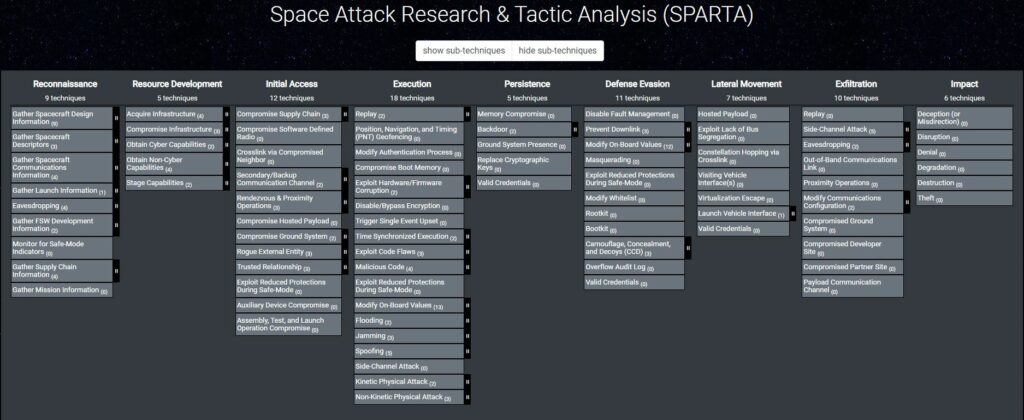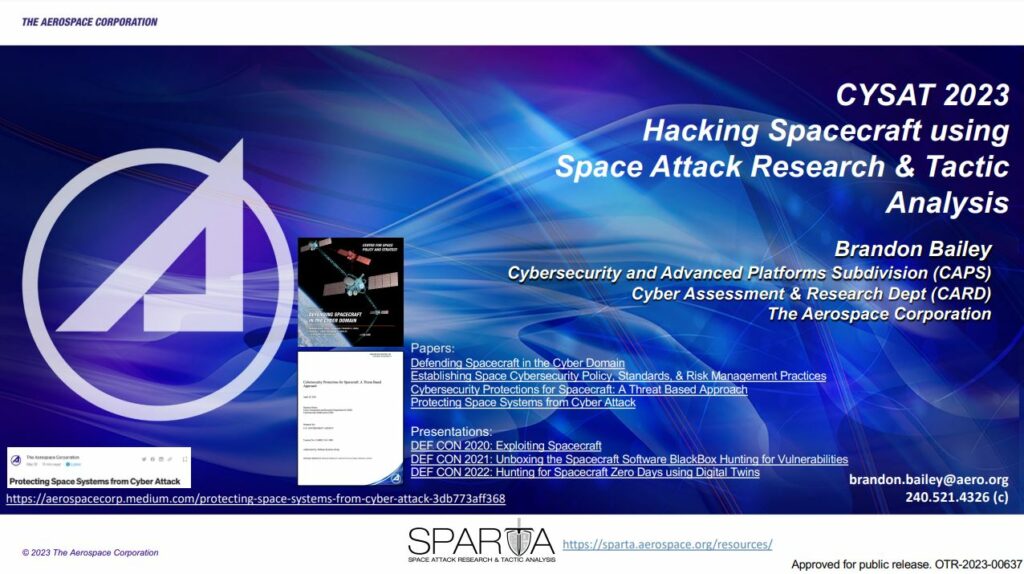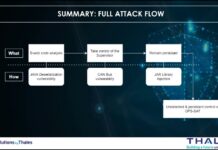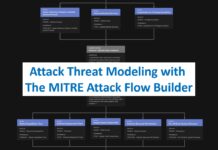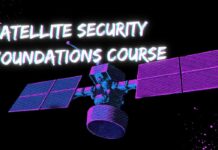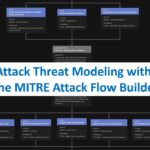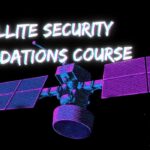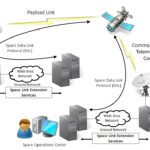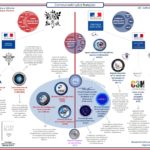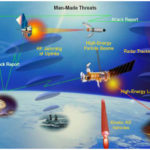Thank’s to Calogero Vinciguerra (Space Policy Officer & Space Threats Response Architecture DO at the European External Action Service, EEAS) and Kimberly King (Senior Engineer at The Aerospace Corporation) for helping me to write this article.
Aerospace Corporation released SPARTA v1.3, a new version of the Space Attack Research and Tactic Analysis (SPARTA) matrix.
The Aerospace Corporation’s Space Attack Research and Tactic Analysis (SPARTA) matrix is intended to provide unclassified information to space professionals about how spacecraft may be compromised due to adversarial actions across the attack lifecycle.
SPARTA is an ATT&CK® like knowledge-base framework but for for Space Missions.
SPARTA framework offers space professionals a taxonomy of potential cyber threats to spacecraft and space missions.
SPARTA framework “is intended to provide unclassified information to space professionals about how spacecraft may be compromised via cyber means.”
SPARTA v1.3 delivers significant updates. You can find all relevant updates in this blog post.
SPARTA cyber-security framework defines and classifies the activities, tactics, techniques and procedures (TTP) implemented by malicious hackers, aimed at compromising the functionality and operation of both space vectors and satellite systems in orbit.
You can enter to the SPARTA portal here.
In v1.3, a new presentation from CySat 2023 has been posted here.
Video of the CYSAT 2023: Demo “Hacking Spacecraft using Space Attack Research and Tactic Analysis”
Demo by Brandon Bailey (SPARTA), Senior Cybersecurity Project Manager at The Aerospace Corporation.
What about SPARTA vs. ATT&CK MITRE ?
The current cyber-security frameworks – MITRE’s ATT&CK and Microsoft’s Kubernetes – while representing the industry standard for analyzing attacks on terrestrial devices, however, do not sufficiently cover the space segment scenarios.
What about SPARTA vs. SPACE-SHIELD ?
SPACE-SHIELD (Space Attacks and Countermeasures Engineering Shield) is an ATT&CK® like knowledge-base framework for Space Systems. It is a collection of adversary tactics and techniques, and a security tool applicable in the Space environment to strengthen the security level. The matrix covers the Space Segment and communication links, and it does not address specific types of mission. You can learn more about SPACE-SHIELD here.
Need to go futhermore MITRE ATT&CK framework ?
To go futhermore the concept of MITRE ATT&CK framework applied on specific domain, you can also have a look on the MITRE ATT&CK for ICS Matrix.
The MITRE ATT&CK for ICS Matrix is an overview of the tactics and techniques described in the ATT&CK for ICS knowledge base. It visually aligns individual techniques under the tactics in which they can be applied.
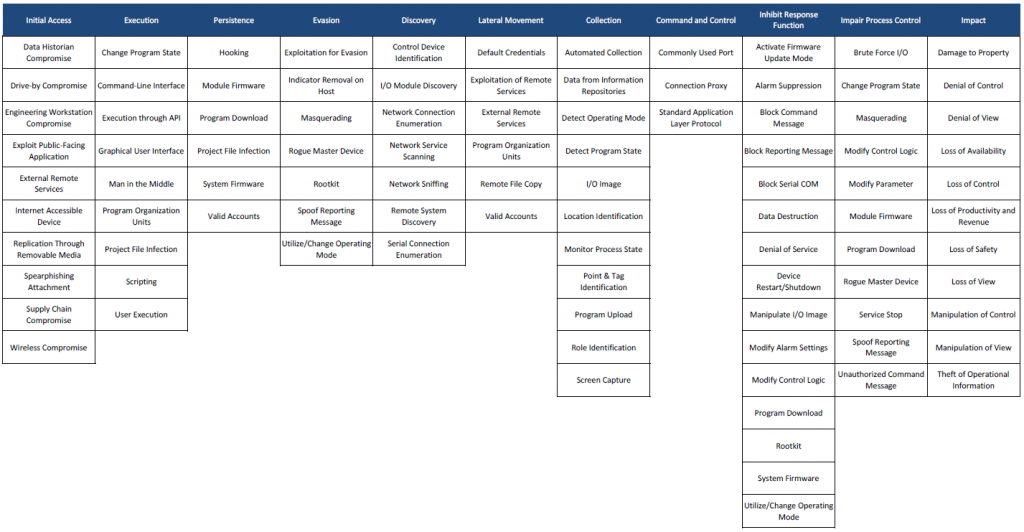
Below is the mapping of Stuxnet attack on the ATT&CK for ICS matrix (Than’ks to Airbus Cybersecurity). « Mapping Stuxnet to the ATT&CK for ICS matrix, as shown in figure 3, quickly shows how complex this attack was. Business risk owners can now identify which techniques to focus on if they need to minimise the risk from strikes like Stuxnet. »
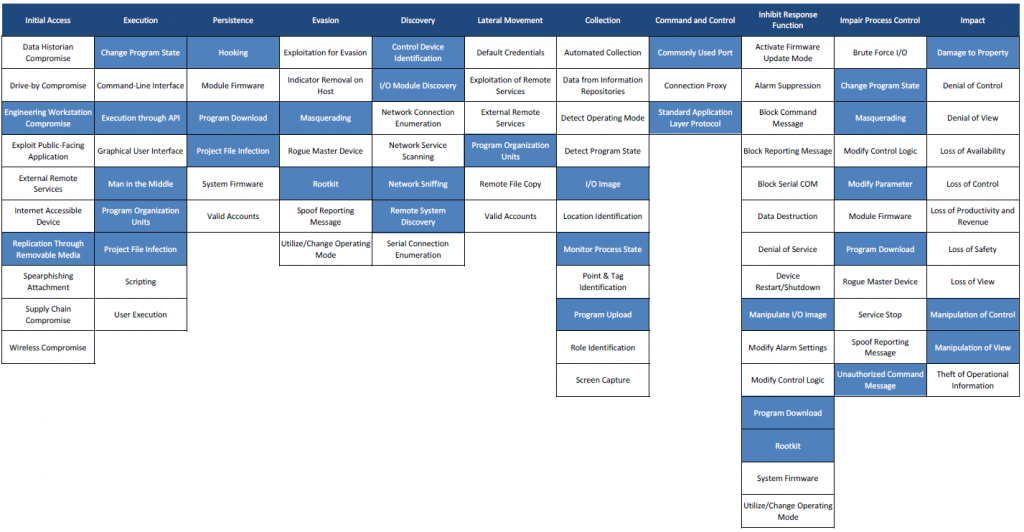
About Aerospace Corporation
Source : Linkedin Profile
The Aerospace Corporation has provided independent technical and scientific research, development, and advisory services to national-security space programs since 1960. We operate a federally funded research and development center (FFRDC) for the United States Air Force and the National Reconnaissance Office and support all national-security space programs. We also apply more than 40 years of experience with space systems to projects for civil agencies like NASA and the National Oceanic and Atmospheric Administration, commercial companies, universities, and some international organizations in the national interest.
From our inception, our highly skilled technical people have focused on ensuring the success of every mission and developing the most effective and economic space-related hardware and software in the world. Our insight and involvement in space programs has significantly reduced the risk of launch failure and increased both satellite endurance and performance. Avoiding a single catastrophic failure resulting in the loss of operational capabilities can save the government more than three times the total annual Aerospace FFRDC budget.
We don’t manufacture anything. Our greatest asset is the technical expertise of our people. Our involvement spans all facets of space systems: including systems engineering, testing, analysis, and development; acquisition support; launch readiness and certification; anomaly resolution; and the application of new technologies for existing and next-generation space systems. Our state-of-the-art laboratory facilities are staffed by some of the leading scientists in the world.
Aerospace Corporation’s website : aerospace.org

